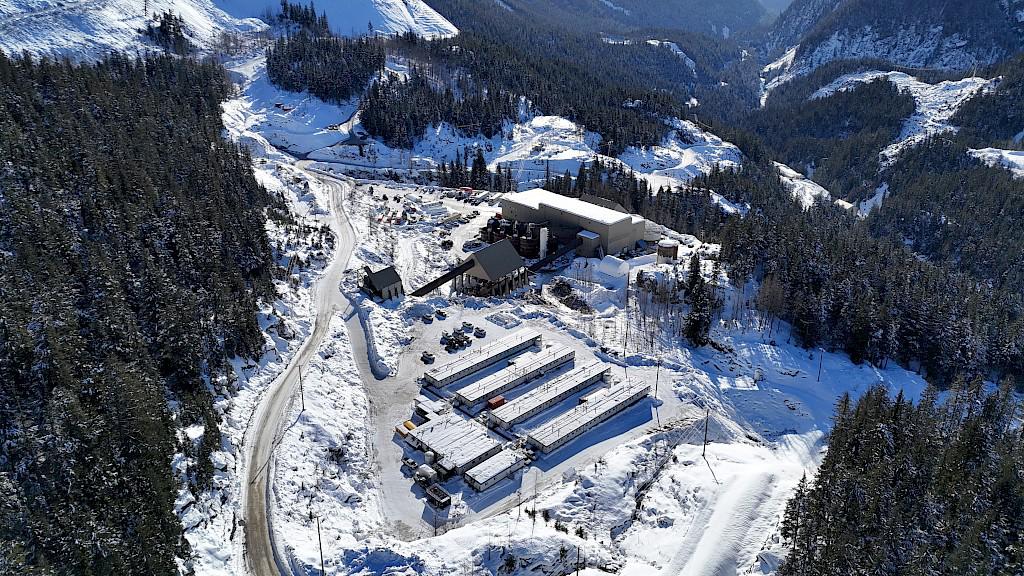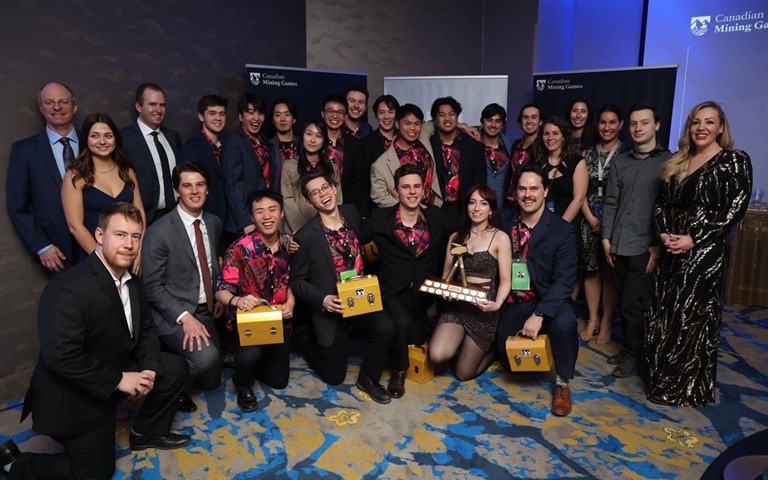Students from UBC ranked in first place at this year’s games. Courtesy of Canadian Mining Games.
This year’s 34th edition of the Canadian Mining Games took place from March 7 to 10 at Sudbury’s Laurentian University and offered post-secondary mining engineering students from across Canada the opportunity to showcase a variety of skills through 24 unique theoretical and practical challenges related to mining.
The schools that participated in this year’s games included the University of British Columbia (UBC), the British Columbia Institute of Technology, the University of Alberta, the University of Saskatchewan, the University of Toronto, Queen’s University, Laurentian University, McGill University, Polytechnique Montréal, the Université Laval, and Dalhousie University.
Mining engineering students from UBC took first place in this year’s games, with the University of Alberta claiming second and McGill University claiming third. Each of the students who placed first were gifted with an all-expenses paid trip to Barrick and Newmont’s joint venture Nevada Gold Mines, where they will have the chance to tour the company’s mine sites and operations.
Ian Berdusco, chair of the Canadian Mining Games, told CIM Magazine that in addition to the games’ cornerstone events such as the mine design and mine rescue challenges, there were also new challenges introduced this year, which focused on innovation in mining and challenges related to sustainability in mining. For example, the tailings/closure management challenge required students to design a tailings management facility and develop a mine closure plan.
In addition, a livestream of the jackleg competition, in which students drill various patterns using a jackleg drill while being graded based on safety, technique, accuracy and speed,
was made available to those who could not attend the games, a feature introduced this year.
All 24 events were sponsored by different mining companies that helped develop the challenges. Berdusco explained that some challenges were weighted more than others, such as the mine rescue challenge that lays out a simulation where students must respond to a hypothetical emergency, requiring participants to use first aid and firefighting skills.
“Mine rescue is a pretty intense four-hour competition with four people, so it should be worth something more than a competition that only requires one person,” Berdusco said.
This year, students had the chance to work with actual mine rescue equipment, which Berdusco said was not done with past editions. Students also had the chance to try out their rappelling skills, where they were able to try out specialized equipment used during this essential mine safety skill. Other components of the challenge included a task where students had to open a door using a pry-bar, ascend a rope and use air lifting bags to move a ball through a large-scale maze.
He noted that hosting this year’s edition of the games in Sudbury presented the organizers with a unique opportunity to tap into the town’s local mines as well as local mining suppliers and their capabilities such as for the mine rescue challenge.
As a former Canadian Mining Games national champion himself, Berdusco recalled his experience as a student representing Laurentian University in 2012 and how beneficial it was for him at the time.
“You get to meet different representatives from companies that you’ll likely bump into at different parts of your career, and you get to meet students from other schools,” he said. “This event has typically been a pretty good place for recruitment and, just in general, there’s some really good networking opportunities.”
At a time when enrolment in post-secondary mining programs has decreased significantly, posing a concern for many in the industry, the Canadian Mining Games stated on its website that it will continue to unite mining companies and suppliers with new talent, playing an important role in fueling the industry’s growth.
The 35th edition of the games is set to be hosted in Quebec City next year by Université Laval.




